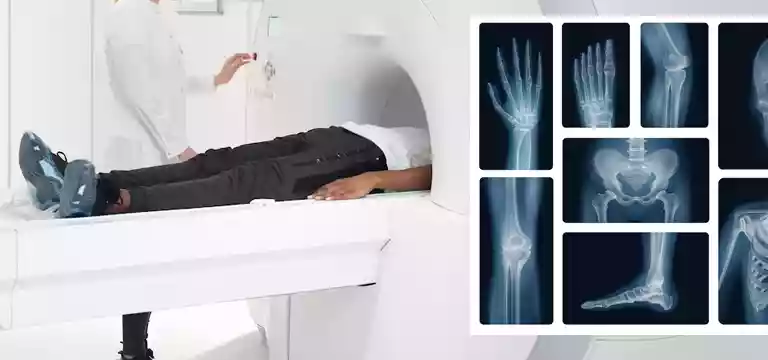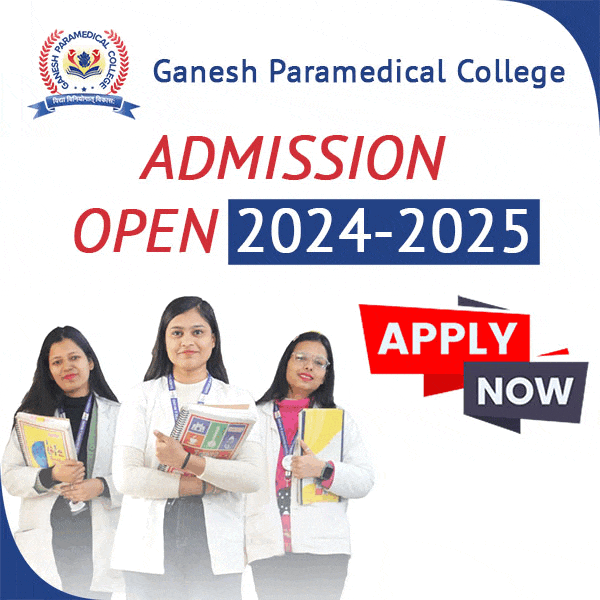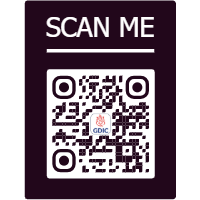
Discover the importance of CT scans and orthopedic imaging in diagnosing and treating orthopedic conditions. Read this comprehensive guide by Ganesh Diagnostics, the best diagnostic center for CT Scans and Orthopedic Imaging...
Introduction
CT scans and orthopedic imaging play a pivotal role in diagnosing and treating orthopedic conditions. When it comes to accurately assessing bone and joint health, CT scans provide detailed cross-sectional images that aid in diagnosis, treatment planning, and monitoring progress. This comprehensive guide will delve into the world of CT scans and orthopedic imaging, explaining their significance and highlighting the exceptional services offered by Ganesh Diagnostics, the leading diagnostic center for CT Scans and Orthopedic Imaging in Delhi.
Understanding CT Scans and Orthopedic Imaging
CT scans, also known as computed tomography scans, are advanced imaging techniques that use a combination of X-rays and computer technology to create detailed images of the body's internal structures. These images offer a comprehensive view of bones, joints, and soft tissues, aiding in the diagnosis and management of orthopedic conditions.
How CT scans work
CT scans involve the use of a rotating X-ray machine that captures multiple cross-sectional images of the body. These images are then reconstructed by a computer to create a three-dimensional representation of the scanned area. The resulting images provide high-resolution details, enabling physicians to analyze bone density, detect fractures, evaluate joint conditions, and identify abnormalities accurately.
Advantages of CT scans over other imaging techniques
CT scans offer several advantages in orthopedic imaging compared to other techniques. They provide superior visualization of bony structures, allowing for precise fracture identification and assessment. Additionally, CT scans excel in evaluating joint diseases, bone tumors, and spinal conditions, making them an essential tool in orthopedic diagnostics and treatment planning.
Importance of Orthopedic Imaging
Role of Imaging in orthopedic diagnosis and Treatment
Orthopedic imaging plays a crucial role in diagnosing various musculoskeletal conditions, allowing physicians to identify and evaluate injuries, diseases, and degenerative processes affecting bones and joints. Accurate imaging helps in formulating effective treatment plans, monitoring treatment progress, and assessing surgical outcomes.
Types of orthopedic imaging techniques
Orthopedic imaging encompasses a range of modalities, including X-rays, CT scans, MRI scans, ultrasound, and bone scans. Each modality offers unique advantages and is selected based on the specific diagnostic requirements and the area being examined.
Comparison of different orthopedic imaging modalities
While each imaging modality has its strengths, CT scans excel in providing detailed images of bony structures and are particularly useful in assessing complex fractures, bone tumors, spinal conditions, and joint diseases. The ability to visualize bone density, soft tissues, and blood vessels makes CT scans invaluable in orthopedic care.
Applications of CT Scans in Orthopedics
Fracture Detection and Evaluation
How CT scans aid in fracture detection
CT scans are highly effective in detecting and assessing fractures, especially those that may not be easily visualized on X-rays. The detailed cross-sectional images provided by CT scans allow for precise identification of fracture lines, evaluation of fragment displacement, and assessment of associated soft tissue injuries.
Assessing fracture severity with CT scans
CT scans assist in determining the severity of fractures, providing valuable information for treatment planning. By assessing the extent of bony damage and associated soft tissue injuries, physicians can make informed decisions regarding conservative management or the need for surgical intervention.
Joint and Bone Conditions
CT scans for assessing joint diseases (arthritis, bursitis, etc.)
CT scans are instrumental in diagnosing and evaluating joint diseases, such as arthritis, bursitis, and synovitis. They provide detailed images of joint structures, enabling physicians to identify joint space narrowing, bone spurs, and inflammatory changes that aid in accurate diagnosis and treatment planning.
Evaluation of bone tumors and infections with CT scans
CT scans play a critical role in evaluating bone tumors and infections. The high-resolution images help identify the location, size, and extent of tumors or infectious processes within the bone, facilitating prompt diagnosis and appropriate management decisions.
Spinal Conditions
Importance of CT scans in diagnosing spinal conditions (herniated discs, spinal stenosis, etc.)
CT scans are essential in diagnosing various spinal conditions, including herniated discs, spinal stenosis, and spinal fractures. By providing detailed images of the spinal column, CT scans help identify abnormalities, assess nerve impingement, and aid in surgical planning when necessary.
Role of CT scans in spinal surgery planning
CT scans play a crucial role in preoperative planning for spinal surgeries. They provide accurate visualization of bony structures, enabling surgeons to assess spinal alignment, detect spinal cord compression, and plan for the precise placement of implants or corrective procedures.
Orthopedic Trauma and Sports Injuries
CT scans for assessing trauma and sports-related injuries
CT scans are invaluable in assessing traumatic injuries, particularly in cases of complex fractures or high-impact trauma. The ability to visualize bony structures in multiple planes aids in identifying subtle fractures, joint dislocations, and associated injuries to soft tissues.
Advantages of CT scans in identifying complex injuries
In cases of complex injuries, such as multi-fragmentary fractures or intra-articular fractures, CT scans provide superior visualization, allowing for accurate classification, assessment of fragment alignment, and surgical planning when necessary. This comprehensive imaging capability helps achieve better outcomes in the management of complex orthopedic trauma and sports-related injuries.
Preparing for a CT Scan and Orthopedic Imaging
What patients should expect before the procedure?
Before a CT scan, patients should expect to provide relevant medical history, remove any metal objects, and change into a hospital gown if necessary. Depending on the type of CT scan, patients may need to fast for a specific duration or avoid certain medications.
Specific instructions for different types of CT scans
Different types of CT scans may require specific patient preparations. For example, contrast-enhanced CT scans may involve the administration of contrast agents, while CT scans of the abdomen may require fasting for a specific period before the procedure. Patients should follow the instructions provided by their healthcare provider or imaging center to ensure a successful scan.
Safety Considerations
Radiation exposure and safety measures
CT scans involve the use of X-rays, which expose patients to a small amount of ionizing radiation. However, the benefits of accurate diagnosis often outweigh the risks. Modern CT scanners are designed to minimize radiation exposure, and radiology professionals follow strict protocols to ensure patient safety.
Contrast agents and their potential risks
Contrast agents, used in some CT scans to enhance the visibility of certain structures, are generally safe. However, individuals with a history of contrast allergies or kidney problems should inform their healthcare provider beforehand. Precautions are taken to minimize any potential risks associated with contrast agents.
Choosing the Best Diagnostic Center: Ganesh Diagnostics
Introduction to Ganesh Diagnostics
Ganesh Diagnostics is a leading diagnostic center in Delhi, committed to providing state-of-the-art imaging services. With a team of experienced radiologists and advanced imaging technology, Ganesh Diagnostics offers accurate and reliable CT scans and orthopedic imaging.
Ganesh Diagnostics Services for CT Scans and Orthopedic Imaging
24/7 availability of CT scans
Ganesh Diagnostics ensures the round-the-clock availability of CT scans, enabling patients to access imaging services at their convenience.
Multiple panels availability
Ganesh Diagnostics offers a wide range of CT scan panels, catering to various orthopedic imaging needs. These panels provide comprehensive imaging solutions, allowing for accurate diagnoses and effective treatment planning.
Branches of Ganesh Diagnostics in Delhi
Ganesh Diagnostics has multiple branches conveniently located in Delhi, ensuring easy accessibility for patients. The branches include Rohini, Hari Nagar, Firozabad, Mangolpuri, Model Town, Nangloi, and Yamuna Vihar. Visit the respective links for more information on each location.
Conclusion
CT scans and orthopedic imaging are indispensable tools in the diagnosis and treatment of orthopedic conditions. With their ability to provide detailed images of bones, joints, and soft tissues, CT scans aid in accurate diagnosis, treatment planning, and monitoring of orthopedic conditions. Ganesh Diagnostics stands out as the best diagnostic center for CT Scans and Orthopedic Imaging in Delhi, offering exceptional services, advanced technology, and expert radiologists. With their commitment to accuracy and patient care, Ganesh Diagnostics ensures reliable and precise imaging services for optimal orthopedic care.
FAQs
Why are CT scans preferred for evaluating fractures?
CT scans are preferred for evaluating fractures because they provide detailed images that can identify subtle fractures, assess fragment displacement, and detect associated soft tissue injuries. This comprehensive assessment aids in accurate diagnosis and treatment planning.
How do CT scans help in diagnosing joint diseases?
CT scans help in diagnosing joint diseases by providing detailed images of joint structures. These images allow physicians to assess joint space narrowing, detect bone spurs, and evaluate inflammatory changes, enabling accurate diagnosis and appropriate treatment plans.
Are CT scans safe for children?
CT scans involve a small amount of ionizing radiation, and it is essential to minimize radiation exposure, especially in children. At Ganesh Diagnostics, we follow strict protocols to ensure the lowest possible radiation dose while maintaining diagnostic accuracy and safety for pediatric patients.
What is the role of contrast agents in CT scans?
Contrast agents are sometimes used in CT scans to enhance the visibility of certain structures. They help differentiate between normal and abnormal tissues, improving diagnostic accuracy. At Ganesh Diagnostics, we use safe contrast agents and take precautions for individuals with allergies or kidney problems.
Why choose Ganesh Diagnostics for CT Scans and Orthopedic Imaging?
Ganesh Diagnostics is the best diagnostic center for CT Scans and Orthopedic Imaging in Delhi due to the following reasons:
- State-of-the-art imaging technology
- Experienced and skilled radiologists
- 24/7 availability of CT scans
- Multiple branches conveniently located in Delhi
- Commitment to accurate and reliable imaging services
















